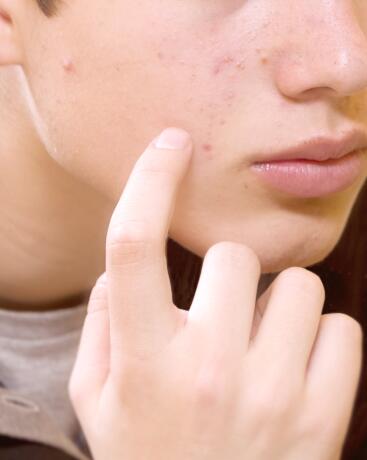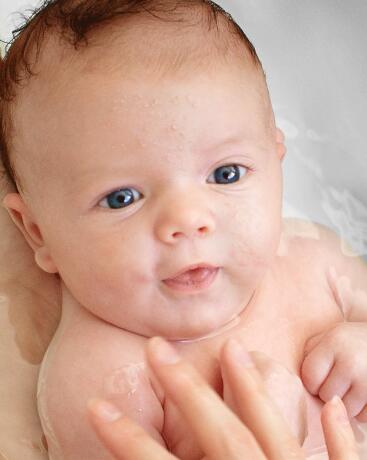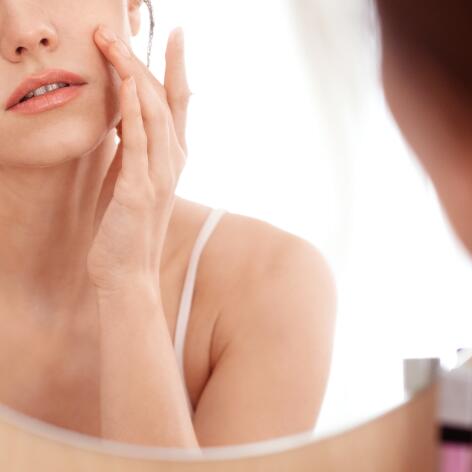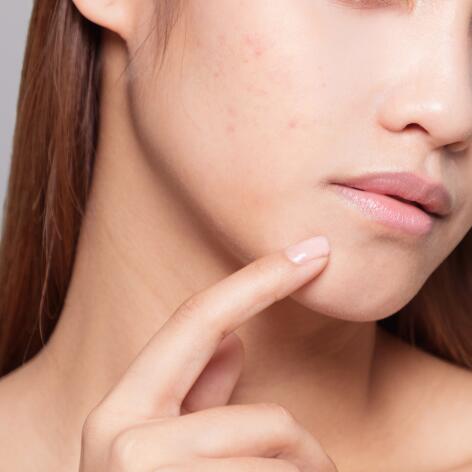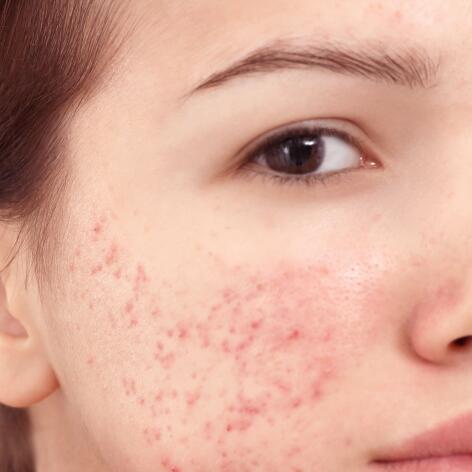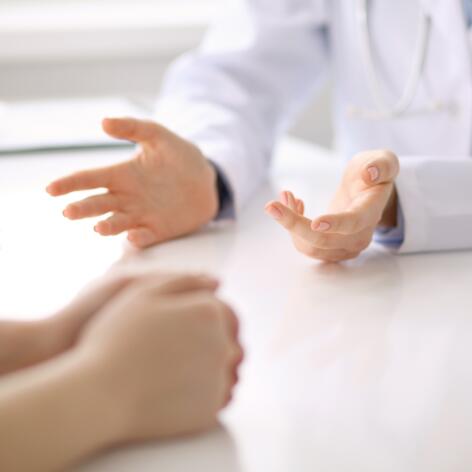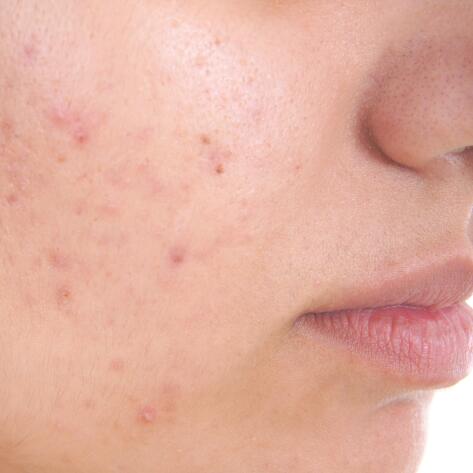What is acne-prone skin?
What is acne-prone skin?
Acne affects about 6 million people in France. It is also the leading cause of dermatological visits. Although the main target group is still teenagers, adults can also be affected. But in fact, what is "acne-prone skin"? What is it due to? And what care should be taken on a daily basis to reduce it?
What is acne?
Acne is an inflammatory disease of the pilosebaceous follicle. Each hair is associated with a sebaceous gland that secretes sebum, an oily fluid whose role is to protect our skin. In the case of acne, the sebaceous gland is blocked by sebum that has become too thick and is secreted in excessive quantities. In addition, the cells at the entrance to the pilosebaceous follicle behave abnormally and create an imbalance in the flora.
 Normal pilosebaceous follicle VS comedo 1: Sebum in its normal state 2: Sebaceous gland 3: Obstruction of the canal 4: Unbalanced sebum (thicker, changed composition) 5: Stem cell multiplication = thickening of the follicle wall
Normal pilosebaceous follicle VS comedo 1: Sebum in its normal state 2: Sebaceous gland 3: Obstruction of the canal 4: Unbalanced sebum (thicker, changed composition) 5: Stem cell multiplication = thickening of the follicle wall
What causes acne?
Acne occurs mainly at puberty, due to hormonal changes. Hormonal changes can also lead to acne breakouts in women as adults. Genetics also play a role in this disease. If both parents were affected at a younger age, the risk of developing acne is increased. Other factors can also play a role, such as stress, smoking, pollution and even sun exposure. But more than identifying the cause, the most important thing is to identify the right treatment!

The different types of acne
Clogged pores encourage the development of blackheads (open comedones) or microcysts. This is called retentional acne. But when they become inflamed, under the effect of a bacterium – whose scientific name is Cutibacterium Acnes – they can turn into non-purulent red pimples (papules), purulent pimples (pustules) or larger pimples that are generally painful and deeply rooted in the skin (nodules). This is inflammatory acne (most common in adult women).
"During my second pregnancy, I ended up with micro-cysts on my jaw and blackheads on my cheeks".
Acne at all ages
Teenage acne is the most typical form. But it can also affect people of other ages. So let's take a look at acne in young people, but also in adult women and even in infants.
- Teenage acne
- Adult acne
- Acne in infants
Beware of acne scars
Scars are the most unsightly consequences of acne. As they heal, acne lesions can leave more or less deep and lasting marks, the appearance of which is mainly favoured by the handling of pimples and the severity of your acne. It’s possible to prevent them with early treatment and adapted care, or to reduce them if they are already there. But the most important thing is not to fiddle with your pimples!
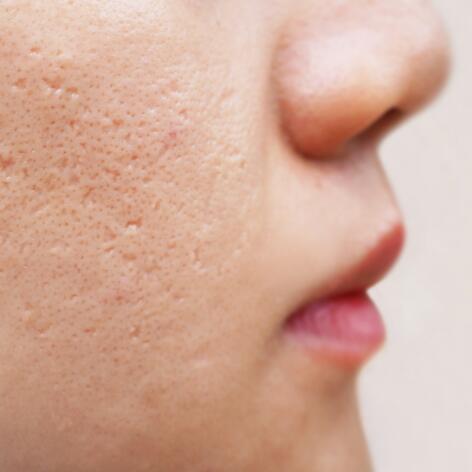
FRIENDLY (AND EXPERT) ADVICE
The dermatologist, your main point of contact
Whatever your age, whatever the form of your acne, your main point of contact will be your dermatologist. Do not hesitate to consult them as soon as the first signs appear. They will know how to adapt your treatment, depending on several criteria: the progression of the disease, its severity, the effectiveness of the treatments you have already undergone. They will also give you advice on dermo-cosmetic care and will be able to reassure you if acne is disrupting your daily life too much.
We answer your questions
We’re here to help you sort fact from fiction
While the idea is widespread, it’s not so simple. Only excess seems to be involved. In principle, a fatty diet is not a factor that aggravates acne. On the other hand, some studies point to fast sugars, with a high glycaemic index, in the appearance and persistence of acne.
This time it's true. More precisely, it’s a trigger, not a direct cause of acne. For example, the approach of an exam or a job interview can lead to an acne breakout.
No. On the contrary, it is perfectly possible to wear make-up. The important thing is to choose the right products: adapted to your type of acne and non-comedogenic. And don't forget to remove your make-up every night to avoid "clogging" the skin that you are trying to purify.
Our solutions for taking care of your acne-prone skin
Our Cleanance skin care products are designed to reconcile you with your skin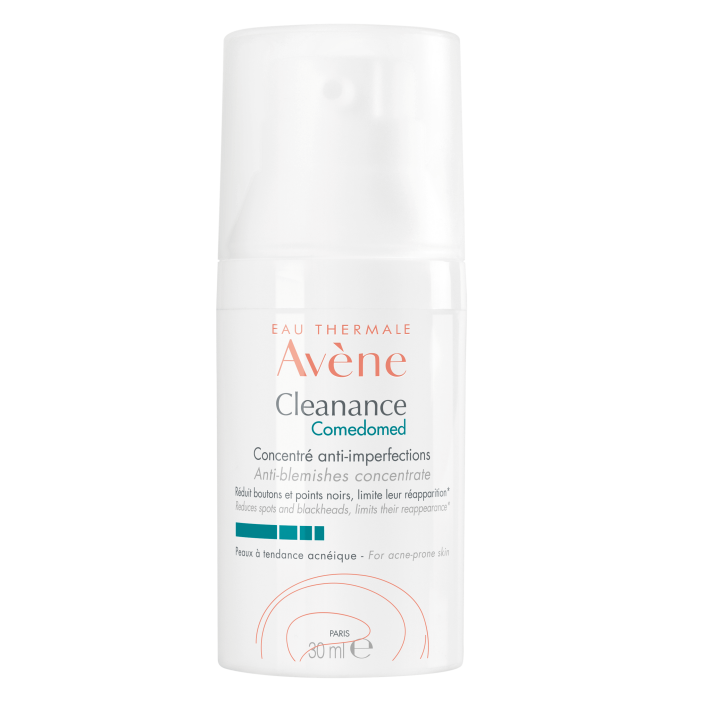
Cleanance COMEDOMED Anti-Blemish Concentrate
I have been using this product for 1 week and frankly I can already see improvements. I like the texture and the easy-to-use bottle.
MORE
- Discover From retentional acne to inflammatory acne: the different types of acne
From retentional acne to inflammatory acne: the different types of acne
NEWSLETTER
We’re always here for your skin!
All our tips for taking care of your skin day to day.
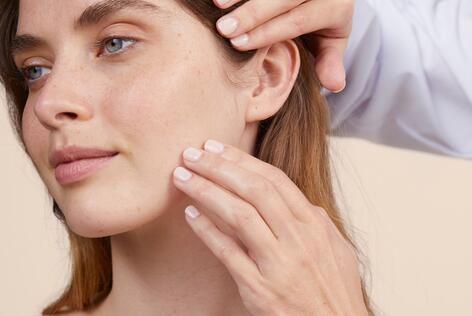
Which skin care routine should you adopt?
Identify what it really needs with the help of our experts and discover the most suitable skin care routine for you.

